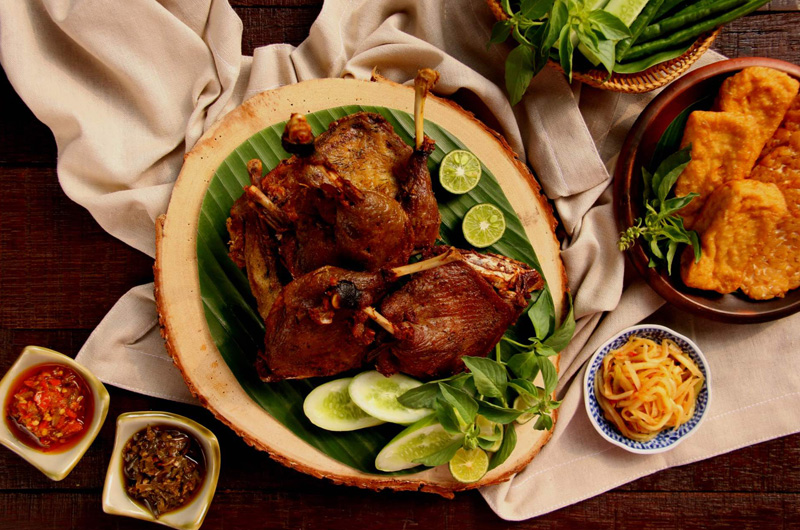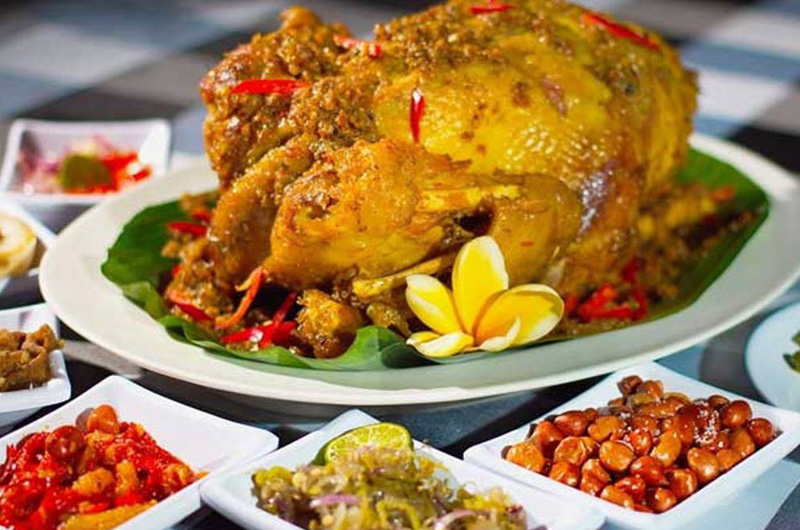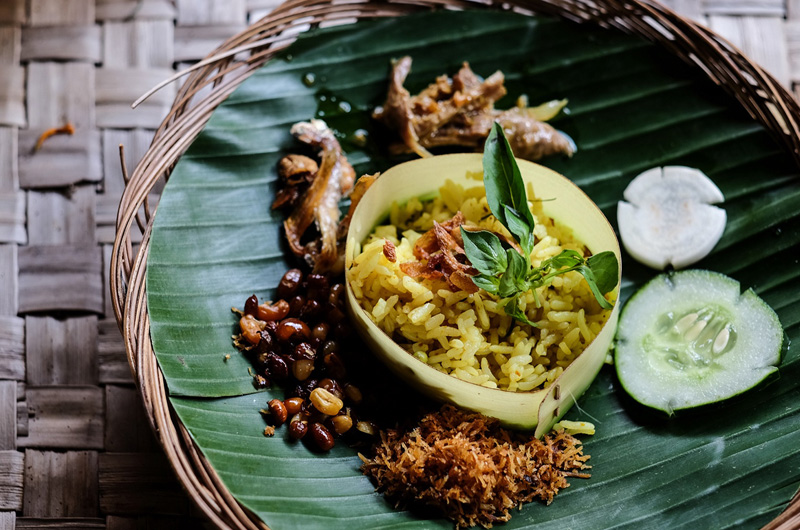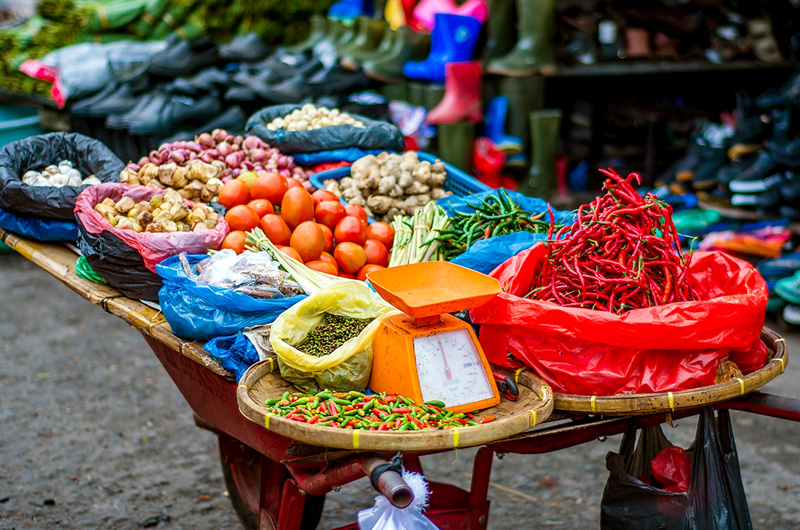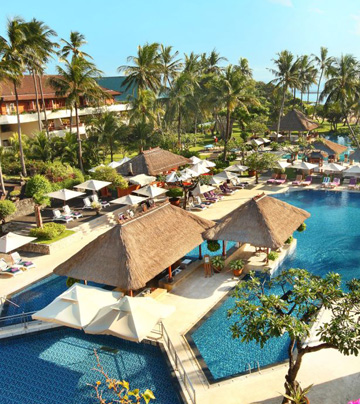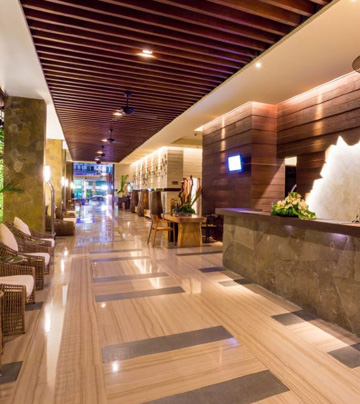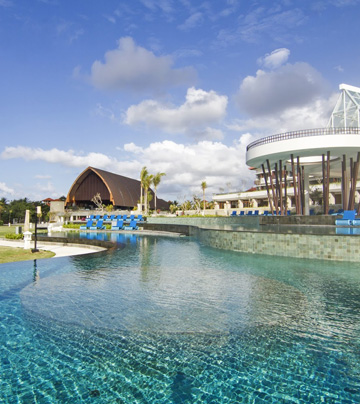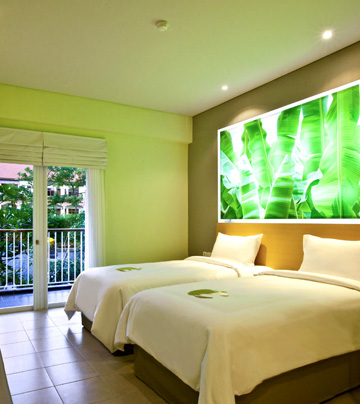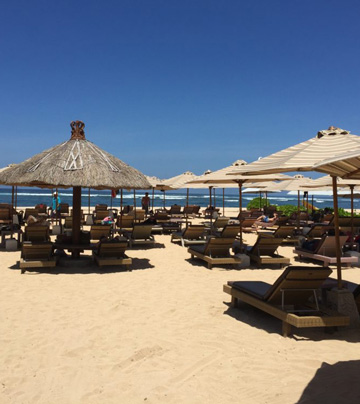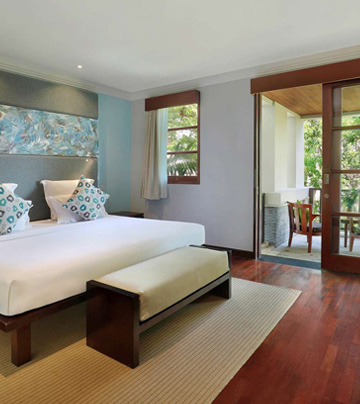More about Bali
Welcome to one of the smallest, and perhaps the most breathtaking, islands in the world! In the Indonesian Archipelago, Bali has an area of 5.632,86 square kilometers and is divided into nine districts: eight regencies and one municipality. Bali, itself, comprises of several smaller islands, Nusa Penida, Nusa Ceningan, Nusa Lembongan, Serangan Island and Menjangan Island, where there are countless mountains and lakes.
Bali’s nature is incomparable. Most mountains are also volcanoes. Mount Gunung Agung stands at 3142m high and is the highest point on Bali island. Beratan, Buyan, Tamblingan and Batur lakes are among some of the stunning. Bali’s capital city is Denpasar, surrounded by a cluster of high volcanoes, their craters studded with serene lakes set in dark forests filled with monkeys.
The original charm of Bali is still much in evidence with stunning temples and spectacular festivals wonderfully complimented by the gorgeously lush landscape. Bali's most famous and crowded resort is Kuta: a sweep of golden beach, plenty of villas and, thriving nightlife. The nearby Sanur area is much quieter.
Bali's major destination is the cultural center of Ubud, where traditional dances are staged every night of the week and the streets are full of arts-and-crafts galleries.

Custom Tours by Bali 4 Ever
About Indonesia
Indonesia is a country situated in the Southeast Asia. Four fifths of the area is sea and the archipelago consists of 17.508 islands.
The major islands are Sumatera, Java, Kalimantan, Sulawesi and Papua. The capital city is Jakarta on the island of Java. Indonesia is the fourth populated country with a population of over 250 million. It borders Papua New Guinea, East Timor, Malaysia and neighbors the Philippines, Australia, and Singapore. Indonesia got its name from the Latin word ‘’Indus’’ meaning India and the Greek word ‘’Nesos’’ meaning island.
The flora and fauna of Indonesia is a mixture of Asian and Australian species. Forests cover almost 60% of the country. When exploring Indonesia you will smell the beautiful fragrances of the multitudes of flowers. Jasmine, water lily, magnolia, orchids can be found in the offerings to the Gods at the temples and in the gardens. Coconut trees and bamboos also speckle the forests.
As for fauna, Indonesia is home to a large variety of Asian species like tigers, elephants, rhinoceros, orangutans, and over 600 kinds of birds. Of course you cannot forget the rich sea and coastal ecosystems full of colorful coral fish and reefs.
Wonderful Indonesia:
A Visual Journey
Indonesian History
Indonesia is a democratic republic divided into 32 provinces and four geographical groups. The first of the groups is Greater Sundas consisting of Sumatra, Java, Kalimantan and Sulawesi. The second is called Lesser Sundas and includes Bali until Timor. The third group, Maluku, is made up of the islands between Irian Jaya and Sulawesi. The fourth and final group is lrian Jaya, the eastern part of the country.
Indonesia was a Dutch colony until World War II. President Sukarno (serving 1945 to 1967) was Indonesia’s founding president, but Major General Suharto’s New Order administration (1967 to 1998) led to the major economic growth, encouraging foreign investments in Indonesia. The East Asian Financial Crisis in 1997 hit Indonesia hard and eventually led to Suharto’s resignation.
Bali - Cuisine and restaurants
Indonesians eat rice every day. Rice consumption averages around 0, 5 kilos per day as the main ingredient in Balinese cuisine. Aside from rice, dishes include cooked vegetables and meat or fish. Chilly spices, like sambal, garlic, ginger and red hot chili peppers are standard flavors.
Two traditional Balinese dishes stick out: Babi Guling, the crispy skin and pieces of grilled suckling pig which is a specialty of the town of Gianyar, and the Bebek Betutu, a delicious duck specialty, slowly baked in banana leaves together with many different herbs and spices. Coconut is also a prevalent ingredient. With coconut the Balinese produce coconut milk (santan), grated coconut (nyuh kikih), coconut palm sugar (gula aren), and coconut vinegar (cuka nyuh).
Two of the most popular dishes among tourists are Nasi Goreng (Indonesian fried rice with a fried egg on top) and Mie Goreng (fried noodles with egg). Deserts are made of rice, too. The widely available is Black Rice Pudding. Other deserts are pisang goreng (fried bananas), peanuts in palm sugar, cooked peanuts and jaja (multi-colored coconut confectionary).
There is a place to eat for every budget. From fine and luxurious restaurants to small food stalls. Most restaurants in Bali are open until around 22:00, but in touristic areas, especially in Kuta, many of them that stay open until 24:00 or even on a 24h basis. For those who don’t find Balinese cuisine to their liking, there are big international food chains like KFC, McDonald’s and Pizza Hut.
Some of the best recommended restaurants where you can find traditional Indonesian as well as international food are; Made’s Warung, Ibu Oka, Wahaha, Bebek Eropa, Mamas Chandi, Ultimo Oberoi, Char Char in Seminyak, the famous Fish restaurants in Jimbaran, Sundara Bali in Jimbaran, Eco Beach fish buffet, The Kampung Resort in Tegallalang, Lotus Cafe in Ubud and for romantic dinners you should definitely go to La Lucciola and Mosaic Ubud. In these places, the prices of a meal per person vary from 5-20 USD.Balinese people cook once a day, early in the morning and they eat three times a day; in the morning, at 11:00, and at sunset. They always eat with their right hand, as the left is considered impure. The host doesn’t usually eat with the guest. During dining, people normally drink water or tea. Balinese often eat quickly without much fanfare.
In restaurants you’ll pay between 2,5 and 5$ for a large bottle of local beer (0,5 l). Plus plus (++), means plus 10% tax and 5-11% service charge in hotels and some restaurants. A small glass of mediocre Australian table wine costs 4 to 6$. Prices for a bottle of higher quality wine start between 25$ and 45$, depending on where you are. Prices for wine and champagne in many hotels are very high compared with Western countries due to import taxes on liquor and wine.
If you think the prices of these imports are too high, you should at least try the HATTEN wines, made from grapes grown in North Bali and sold in restaurants for 15-20$ per bottle.
Most foreigners like the local BINTANG beer. Many restaurants and pubs also serve BINTANG on tap as a draft. Other popular beers are ANKER, CARLSBERG, SAN MIGUEL, STARK and BALI HAI beer. Balinese enjoy their home brewed Arak, Tuak, and Brem. It is a tradition that in all villages the men meet in the evening and discuss the news of the day and drink their rather potent home brews.
Tuak (about 5% alcohol) is a sweet palm wine made from the juice of the coconut palm flower which is stored for about one month for fermentation.
Brem is made from black glutinous rice and coconut milk; the alcohol content is about 7% to 9% after three days fermentation.
Most popular with foreigners is Arak: a colorless, sugarless spirit distilled from either Brem or Tuak with 20% to 50% alcohol content. A whole bottle costs about 5$, and it is usually served ‘on the rocks’ as “Arak Attack” or “Arak Madu” which is Arak, lemon or orange juice, and honey. A highly recommended local experience you should try at least once.
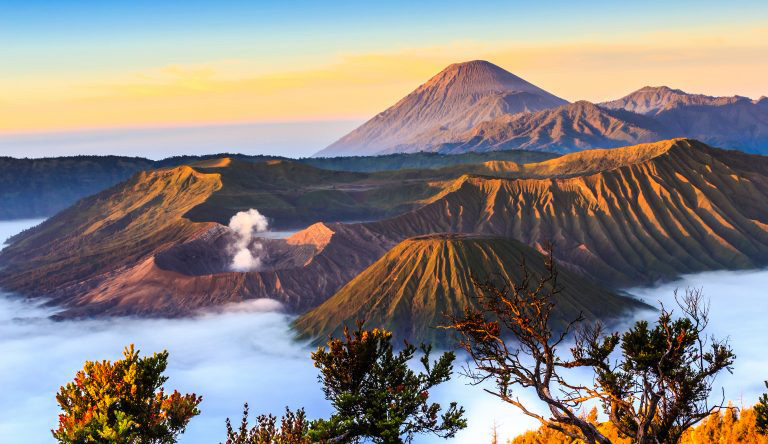
The sacred Mount Agung
There is one mountain that is considered sacred by Balinese and that is Mount Agung. It is believed that the mountain was raised by the gods and is where you return when you die. When the gods are disappointed by the humans they ‘’wake up’’ the volcano and large amount of lava runs from it.
Legends circulate among locals on how the majestic mountain came to be. Some people believe that the mountain was first a part of Mount Meru brought to Bali by the first Hindus. Mount Meru is a sacred cosmological mountain that bears heaven on its summit, considered to be the center of all universes; physical, metaphysical, and spiritual.
Bali Temples
Bali has over 1.000.000 temples and is known as ‘’the Island of the thousand temples.’’ The temples are places where people and Gods meet. Balinese people have temples for every aspect of their life. The family temple, village temple, cave temple, there are even temples for products like rice. Visitors are requested to respect the dress code when entering the temples. No one entering the temples should wear shorts, miniskirts or anything else that may offend their religion. One can hire a sarong (a long piece of cloth that you can tie on your waist) in front of the temples. On anniversaries and festival days, the Balinese people bring offerings to their Gods, so the Gods will always protect them and provide prosperity. The main temples in Bali are:
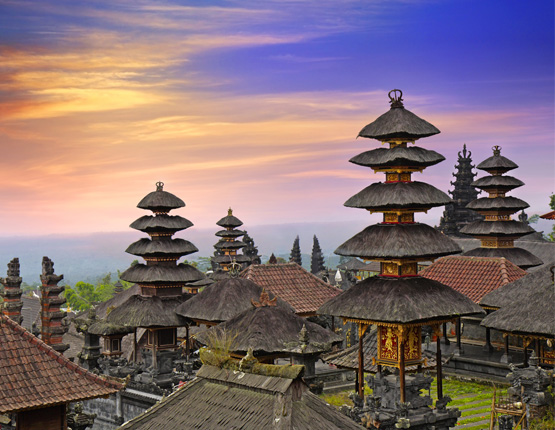

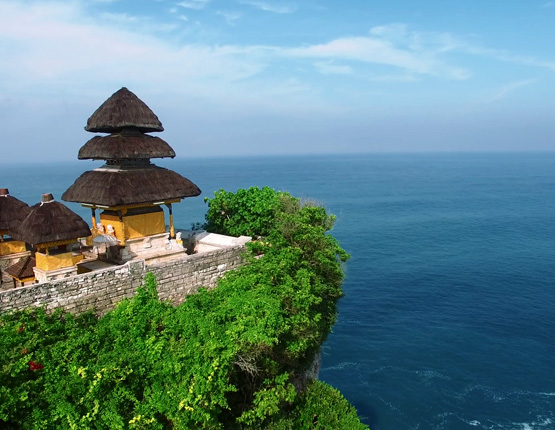
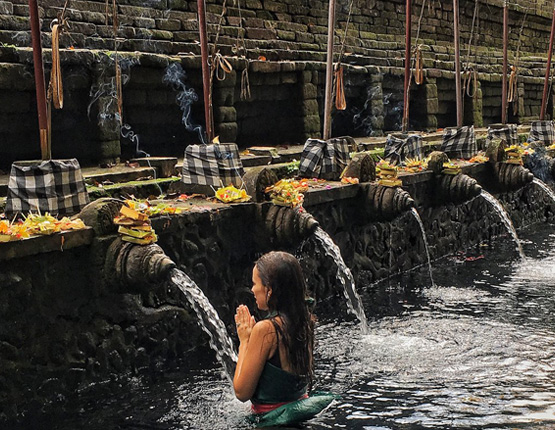
Bali transportation
Bali has numerous choices for transportation. The best choice is Car rental, especially if your party is more than 1 person. You can also rent a car with a driver at your service for 8 hour per day. Renting a motorbike is really convenient but can easily be hazardous. Bicycles are a cheap and flexible option. Due to the fact that Bali is a small place, you can easily get around by bicycle.
Don’t forget to check the condition of the car, motorbike, or bicycle before agreeing to rent it.
Taxi – Negotiate the fare
Bluebird taxi is the most trustworthy one.
Hospitals and clinics in Bali
There are some hospitals and clinics in Bali. First of all, there is BIMC hospital, an establishment near Kuta. It’s a 24h medical and emergency hospital. There are also Emergency Clinics in Nusa Dua and other parts of Bali. Aside from these clinics, you can call 112 for the Emergency Response Centre. There are also plenty of pharmacies where you can freely buy medicines or first aid tools, with affordable prices.
Cheap paradise: Most foreigners find Bali extremely cheap and along with the beautiful scenery it is the perfect paradise for their pocket too.
Bali Accommodation
There are millions of Resorts and Hotels of all categories, as well as home stays and hostels, where you can stay in Bali. Although the “all inclusive” type of vacations are not popular in Bali, every hotel, even the simplest one, has its own in-house restaurant where you can have all your meals and all kinds of drinks with very convenient prices. The island is also very famous for offering accommodation in its amazing Villas. Bali villas are truly magical, offering luxury and privacy in the most peaceful of settings. Visitors can find a home away from home in the island’s upscale villa resorts or in private villas that cater to a wide range of budgets, and in styles that vary from hip and modern to regal and traditional.
These fully serviced villas typically have their own cooks, maids, and drivers who care for their visitors’ every need, making sure that their vacations are perfect. All of the modern amenities can be found, including media centers with sound systems, widescreen TVs, and DVD players, fast Wi-Fi connections, and fully appointed international kitchens. Single travelers and couples can enjoy 1-bedroom or 2-bedroom villas, while families or groups can come together to enjoy an affordable vacation in a multi-room property, with separate incorporated bathroom each, with central dining and lounge areas. Villas in Bali have at least one private pool, where swimmers can look out over lush rice fields or quiet beaches, or just relax poolside with a drink.
Bali’s private villas and villa resorts are often surprisingly affordable, and many travelers prefer to share a rental villa rather than stay in separate hotel rooms.
Bali activities
Bali offers a large range of activities that meet every demand and desire. Name it, and Bali can offer it. Whether you are fond of museums and history or you are a more adventurous person it is certain that Bali has something for you. Of course you can also choose between many organized tours that combine sightseeing and adventure. All you need to have is time and willingness. There is nothing you can’t do in Bali. You can take a day cruise to know the island or visit neighboring islands such as Komodo Island in Flores – the only natural habitat of Komodo Dragons in the world. Nusa Lembongan, Lombok, and Gili Islands are also next door and waiting for your visit.
Bali is a prime surf destination. The waves are great and the temperature of the water perfect for surfing and especially ideal for beginners and professionals, too. All year long, surfers from all around the world visit Bali. It has many places where you can surf depending on you surfing skills. Bali best surfing spots are Kuta beach, Canggu and Uluwatu beach.
For you animal lovers, what better than to visit the Bali Zoo or Monkey Forest. Other adventure choices are; “Waterboom” waterpark, Ubud Rafting Adventure, visit the Tegenungan Waterfall, one day experience of Yoga & Meditation in a specialized center, Agro tourism visit in the plantations of the most expensive coffee “Luwak,” diving in the marvelous underwater of Amed, Nusa Lembongan and Nusa Penida, two side to side islands, Sanur Golf Club for golf lovers, or visiting a Balinese Shaman or traditional healer, swimming with Benoa Dolphins, Uluwatu or Tanah Lot Temple visit and Kecak traditional Balinese Dance Show.
The most interesting Museums to visit are: Blanco Renaissance Museum (entry fee 4$), Denpasar Museum (entry fee 4$). Other galleries are Sumertha Gallery, Made Ada Gallery Agung Rai Museum of Art, Bamboo Gallery, and Gaya Fusion.
Useful tips when travelling to Bali
✅ It is prohibited to bring weapons, narcotics, and explosive and pornographic material into Bali. As far as animals are concerned, they are also banned because they are considered to be a source of rabies. You are allowed to bring alcohol and tobacco, but only in certain quantities. Alcohol has a maximum one liter per person, and tobacco is limited to 200 cigarettes, 100gr of tobacco and 50 cigars. You cannot export over Rp 5.000.000 or national treasures like tortoise shell, crocodile skins and ivory.
✅ In Bali you drive on the left side of the road.
✅ If you take public means of transportation be aware of pickpockets
✅ Protect yourself from the intense tropical sun. Use of sun block, skin protection creams, sunglasses and a hat will help.
✅ When you are in Bali never drink water that it isn’t bottled.
✅ Most prices in restaurants are ++, this means that 11% tax (VAT) and between 5 to 10% service charge is added. If there is no service charge, a tip of 5% or 10% is appreciated but not necessary.
✅ Exchange tips: Some money changers consistently try to short-change their customers and you should make a habit of checking the money carefully twice to make sure that the amount is correct before leaving. Authorized money changers usually offer better deals to change cash or traveler's checks than hotels or banks. Use your own calculator, so that you are certain that the exchanger is giving you the right exchange. Furthermore, calculate the money that you expect to receive in advance. Also, don’t accept torn or old banknotes. You will not be able to spend them in stores. Notice that there are both old and new kinds of banknotes. Last, but not least, don’t exchange a large amount of money. Exchange a small amount. Be careful of your money, don’t show them off and be aware of pickpockets
✅ Bargain: In small shops and open markets, you should bargain for a better price. You may save up to 50%. However, when it comes to bargaining, it’s best to be friendly. Bargain hard but don’t get angry or pushy, and don’t make insulting jokes. You will get nowhere, and might get in an argument. While in big shops and supermarkets the prices are fixed.






